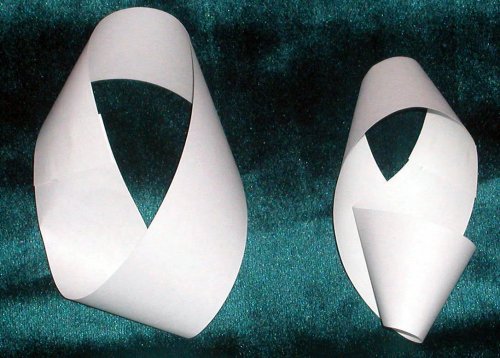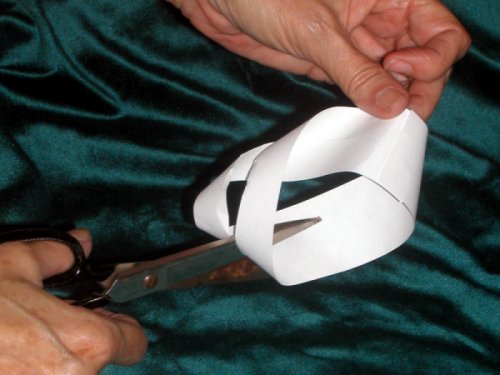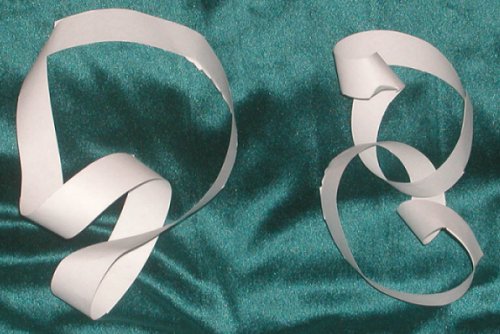Mobius
Today, Möbius' strip. The University of Houston's College of Engineering presents this series about the machines that make our civilization run, and the people whose ingenuity created them.
You've probably heard of Möbius strips: Take a one-foot length of cash-register tape, give it a half twist, and then glue the ends together, forming a circle. Next, draw a line down the middle of the strip, without lifting your pen, until you close the line.
You'll find, to your surprise (if you didn't already know) that the line is not on just one side. Rather, there is no blank side. When you made that half twist, you created a closed loop of paper with no inside or outside. And, when you look at it, you don't quite believe it.
So, who was the namesake of this strange thing? August Ferdinand Möbius was born in 1790, in what is, today, central Germany. He showed an early talent in math, and he finished a doctorate at Leipzig when he was 24. The rest of his life he taught math and astronomy at Leipzig, and he died there at 78.
No grand theories are named after Möbius. In fact, he's famous for two ideas that weren't uniquely his. Yet he was a fine mathematician in a time when Germany excelled in math. Working near him, were Gauss, Jacobi, Dirichlet, and someone you older engineers remember, Bessel of the infamous Bessel functions.
When he was fifty, Möbius gave a lecture in which he posed an odd problem: You're the king, and you must divide your kingdom among your five sons. You want each region to touch all other regions. That's easy enough to arrange with four regions. But just try to do it with five.
A somewhat similar problem is proving that you can color any map using only four colors. You can do the coloring easily enough, but don't try to prove that its possible! It finally took the computer to convince people that they'd never find a map arrangement that needed more than four colors. The map problem is not really the same as the kingdom problem, but Möbius gets wide credit for inventing that four-color problem.
So what about the Möbius strip? In 1858, at sixty-eight, he began his work on geometric solids. He described his Möbius strip in a paper published when he was seventy-five. However, his note-books show that he'd formulated the idea just after he began that work. Then we find that another person, Johann Listing, discovered the Möbius strip idea two months before Möbius did.
Well, that could hardly lessen one's regard for this remarkable person. For he did everything: He did his intuition-boggling geometry and he did celestial mechanics. He wrote the mathematics of musical intervals as well as of psychology.
Möbius' grandson Paul became a neurologist and he eventually dug up Möbius skull. He wanted to explain his grandfather's geometrical ability by studying the shape of that skull. Well that bit of topology failed, of course. But Möbius' strip has been the mental driver for more valuable applied mathematics than I could ever describe in my three-minute allotment here.
I'm John Lienhard, at the University of Houston, where we're interested in the way inventive minds work.
Möbius and His Band: Mathematics and Astronomy in Nineteenth-Century Germany: (John Fauvel, Raymond Flood, and Robin Wilson, eds.) New York: Oxford University Press, 1993.
M. J. Crowe, Mobius, August Ferdinand, Dictionary of Scientific Biography (C.C. Gilespie, ed.) New York: Charles Scribner's Sons, 1970-1980.

Möbius strip with a half twist on the left. On the right is similar strip with a full twist.

Try splitting both of these strips down the middle as shown above.

Slice the Möbius strip down the middle and you get the continuous (but twisted) loop on the left. Slice the full twist strip and you get the remarkable result on the right -- two twisted loops form a two-link chain.
(All photos by John Lienhard)